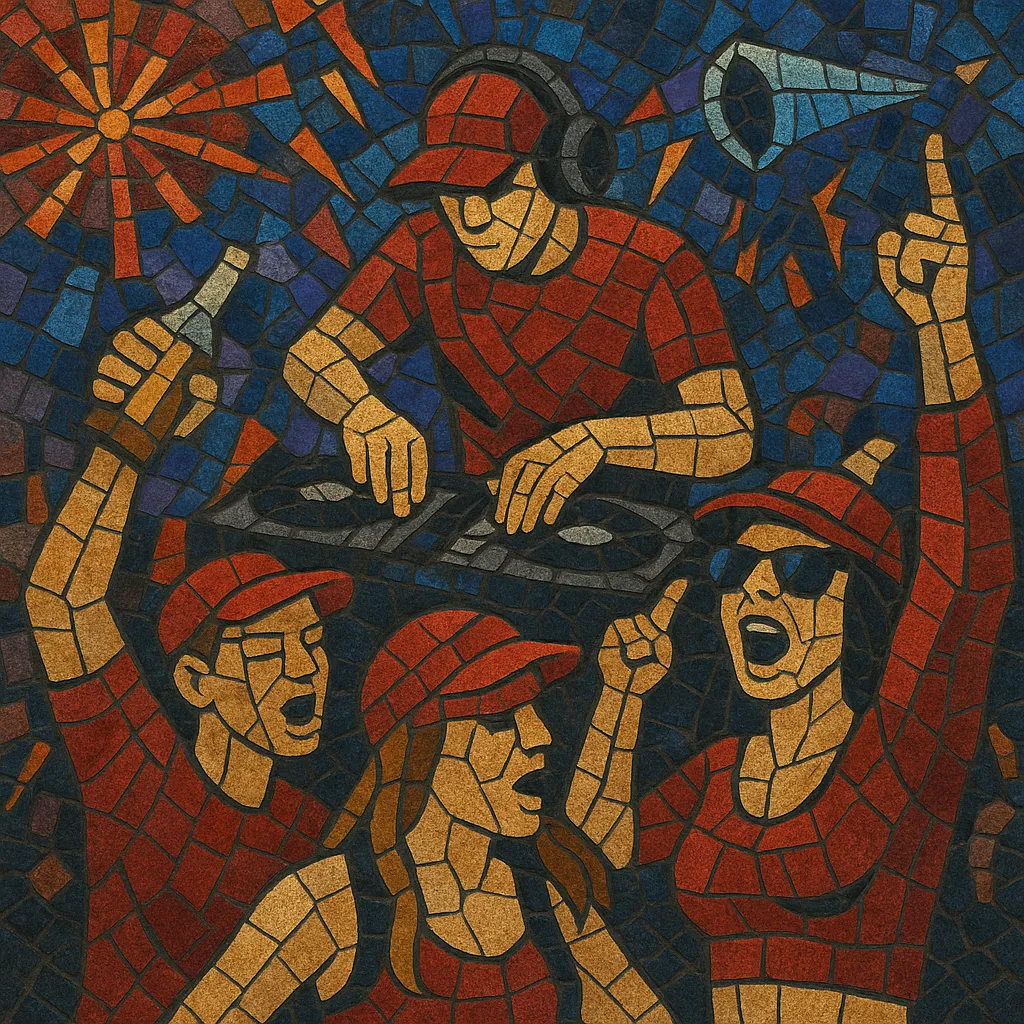Russemusikk is a Norwegian party-oriented micro-genre made for the annual high school graduation celebration known as "russ." It blends mainstream EDM and hard-hitting hip hop/trap aesthetics with simple, chantable hooks designed for mass singalongs on party buses and at outdoor gatherings.
Musically, it leans on big-room leads, distorted festival-style kicks (often edging into hardstyle), noisy risers, crowd FX (airhorns, sirens), and breakdowns that set up explosive drops. Lyrically, it is direct and hedonistic—centered on celebration, bragging, friendship, and the communal identity of a specific russ crew—often using playful or provocative Norwegian slang. Tempos typically range from 125–150 BPM, with both four-on-the-floor and trap-influenced halftime patterns common.
Over time, russemusikk has evolved from a niche commissioning culture into a pipeline that occasionally launches artists into the broader Norwegian pop and dance mainstream.
Russemusikk grew out of Norway’s long-standing "russ" graduation culture, where crews would brand buses, organize events, and adopt anthems. As digital audio workstations and social media democratized production and distribution, local producers began creating bespoke tracks for specific russ teams. Early russemusikk borrowed heavily from mainstream EDM and Eurodance, while adopting call-and-response hooks to function as team chants.
By the mid-2010s, dedicated russemusikk producers emerged, and the practice of commissioning custom songs became common. A competitive commissioning economy developed, with crews seeking louder mixes, bigger drops, and catchier slogans. Songs spilled from buses to national streaming charts, and some acts crossed into the broader Norwegian pop and club circuits. The genre’s crisp, festival-style sound and intentionally straightforward songwriting made it highly effective in live, high-energy settings.
As russemusikk gained visibility, it sparked recurring debates in Norwegian media about lyrical themes (hedonism, provocation, explicit content) versus youth culture self-expression. Nonetheless, the genre also became an incubator for production talent; several producers refined skills in sound design, arrangement, and crowd psychology via russ commissions before pivoting to mainstream careers.
Today, russemusikk remains a seasonal yet influential niche with a clear purpose: to rally crowds. Its sound toggles between big-room/hardstyle pressure and bass-heavy trap stylings, with hooks built for instant recognition. Streaming platforms, TikTok snippets, and YouTube teasers now shape how crews unveil songs, making russemusikk a hybrid of local tradition and modern digital promotion.
Aim for maximum crowd impact. Hooks must be short, repetitive, and easy to shout along with—ideally referencing the russ crew’s name, slogans, or inside jokes. The mix should be loud and bright with high-energy builds and explosive drops.







